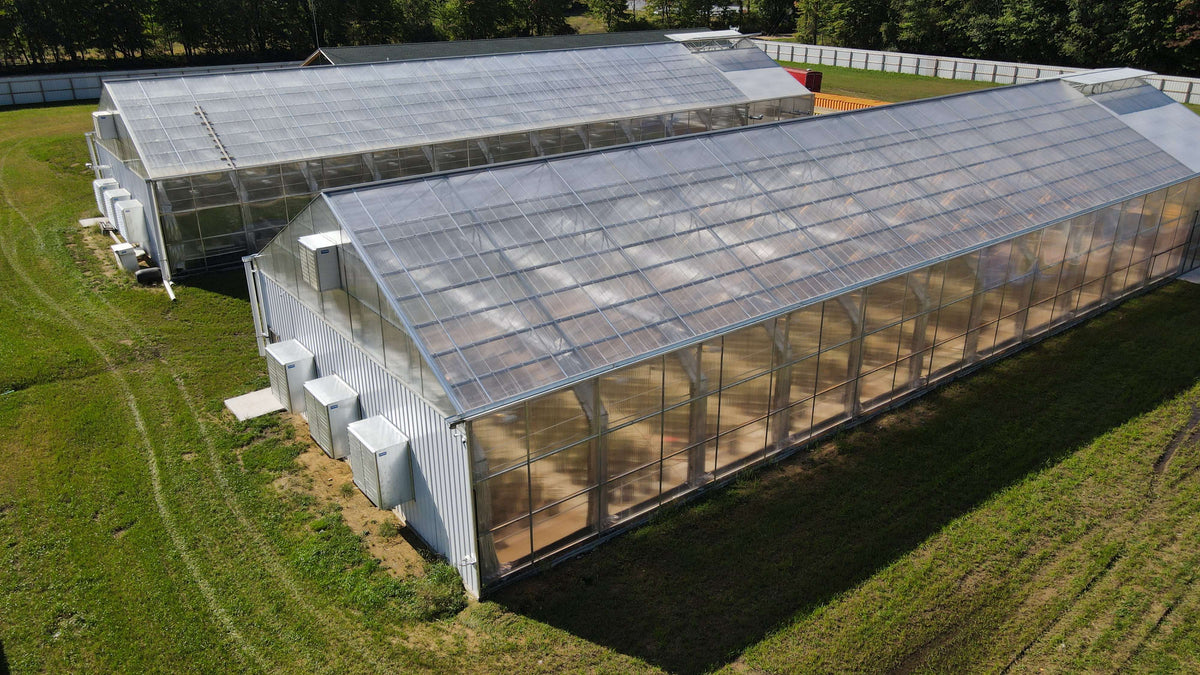The Future of Greenhouses: Developments in Lasting Agriculture
Are you curious about the future of greenhouses and exactly how they are changing lasting farming? From advanced climate control systems to vertical farming techniques, water-efficient irrigation techniques, sustainable power assimilation, and clever information analytics, these advancements are changing the means we expand our food.
Advanced Environment Control Systems
To achieve optimum expanding conditions, you can depend on the developments in greenhouses with sophisticated environment control systems. These systems have reinvented the means we grow crops, giving a controlled setting that contributes to plant growth. With these innovative systems, you can currently adjust temperature level, moisture, light levels, and even CO2 concentrations to create the excellent problems for your plants to prosper.
Among the essential functions of these advanced climate control systems is their capacity to manage temperature level. By utilizing sensors and automated controls, the greenhouse can adjust the temperature level based upon the details demands of the plants. This guarantees that they are never exposed to extreme heat or cool, which can be detrimental to their growth.
Humidity control is another important element of these systems. By preserving the perfect humidity degrees, you can stop issues such as mold and mildew, mold, and disease from impacting your crops. These systems can also manage the quantity of light that reaches the plants, guaranteeing that they get the optimum quantity for photosynthesis.
Furthermore, advanced climate control systems can also manipulate CO2 concentrations. By enhancing the levels of CO2 in the greenhouse, you can enhance plant development and productivity. This is specifically advantageous in areas with reduced natural carbon dioxide degrees.
Upright Farming Techniques
One vital upright farming technique is utilizing piled expanding systems. Stacked growing systems are typically made use of in city areas where area is restricted.
One preferred method is called vertical hydroponics, where plants are grown in nutrient-rich water without dirt. This strategy is very reliable as it reduces water usage by up to 90% compared to standard farming techniques. In addition, given that the plants are expanded inside, they are protected from illness and insects, minimizing the requirement for chemicals.
One more method is aeroponics, which includes putting on hold the plant origins in a haze or air setting. This approach permits ideal nutrient absorption and oxygenation, leading to faster development and higher yields. Aeroponics additionally uses less water than typical farming and can be carried out in upright systems, making it a preferred selection for vertical farming.
Water-efficient Watering Methods
Making best use of water preservation is important when it comes to carrying out water-efficient watering techniques in sustainable farming. With international water deficiency coming to be best mulching mower a pressing concern, it is crucial to create innovative methods that optimize water use in greenhouse operations.
One appealing method is drip watering, which delivers water directly to the plant roots, decreasing waste and evaporation. By making use of a network of tubes with small emitters, water is applied slowly and exactly, making certain that plants get the needed dampness without excess overflow.
One more efficient method is making use of dirt dampness sensors. These gadgets measure the wetness material in the dirt and supply real-time data to farmers. By checking the soil's moisture degrees, farmers can properly establish when and exactly how much water to use, protecting against over-irrigation.
Additionally, the execution of rain harvesting systems is obtaining appeal in greenhouse farming. Accumulating rain from roofs and storing it in storage tanks allows farmers to utilize this all-natural resource for watering objectives, reducing dependence on typical water resources.
Lastly, the adoption of automated irrigation systems can substantially boost water effectiveness. These systems make use of sensors to identify dirt wetness degrees and weather conditions, changing irrigation schedules as necessary. By enhancing water use based upon actual plant needs, these systems can reduce water waste and promote sustainable farming techniques.
Renewable Resource Assimilation
Eco-friendly power integration in greenhouses provides several advantages, consisting of decreased running expenses and reduced reliance on non-renewable energy resources. The created power can after that Visit Website be made use of to run numerous operations within the greenhouse, such as illumination, heating, and ventilation systems. These wind turbines harness wind power and transform it right into electrical power, which can be used to supplement the power needs of the greenhouse.
Smart Data Analytics and Automation
To improve the efficiency of your greenhouse procedures and maximize resource use, consider implementing smart information analytics and automation. Smart data analytics entails gathering and analyzing data from numerous sensing units and tools within your greenhouse.
This can consist of automating the control of illumination, ventilation, watering systems, and nutrient distribution. By automating these procedures, you can ensure that your plants receive the best problems and nutrients at the appropriate time, without the demand for constant hand-operated treatment.
Additionally, clever information analytics and automation can work together synergistically. The data accumulated by sensors can be utilized to notify automated systems, permitting them to make real-time modifications based on the existing problems. This combination of information analytics and automation can bring about a lot more effective and specific resource appropriation, eventually leading to see page greater returns and much better crop quality.
Final Thought
To conclude, the future of greenhouses in lasting farming looks encouraging. With innovative climate control systems, vertical farming techniques, water-efficient watering techniques, and eco-friendly energy combination, greenhouses are ending up being much more environmentally pleasant and reliable. Furthermore, making use of wise data analytics and automation further boosts productivity and minimizes waste. These advancements are leading the way for a more efficient and sustainable agricultural market, making sure a greener and healthier future for all.

By maximizing water use based on actual plant demands, these systems can minimize water waste and advertise sustainable farming practices.
